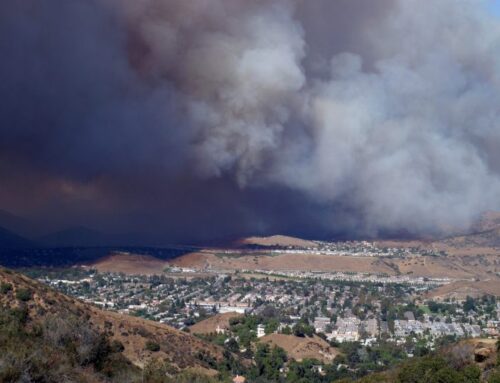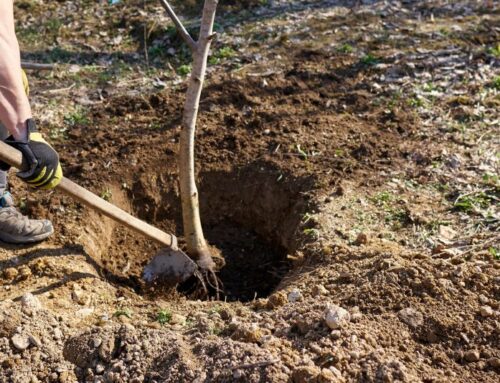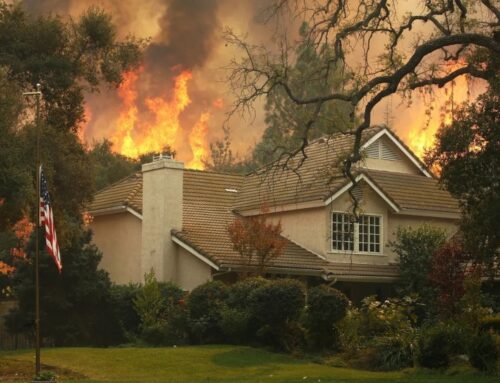Heavy winds, rain, and snow during a storm can batter your once-sturdy trees and make them vulnerable. Not only are leaves and branches littered throughout, but entire trees can fall onto buildings, vehicles, and power lines. At these times, staying alert is highly advised to prevent further damage and protect your safety. This comprehensive guide will review the recommended procedures after storm damage to keep you safe and help your trees recover.
Fixing Trees Damaged by Storms
Safety should be your top priority before diving into any tree work or cleanup. Assess the surroundings for potential hazards, especially if power lines are involved. Contact your local utility company immediately if you notice damaged power lines near the tree. Never attempt to handle power line issues alone, as it poses a severe risk to your safety.
For other tree-related concerns, call a certified arborist. Arborists are trained to evaluate the extent of the damage and provide professional services to restore the tree or remove tree hazards. Their expertise and equipment ensure a safe and effective restoration process.

How to Inspect a Storm-Damaged Tree?
Careful inspection is the first step in understanding the scope of damage and devising an appropriate recovery plan. Here are key indicators to look for:
- Broken Branches: Examine the tree for any broken branches. If the damage is limited to small branches, you can handle the pruning yourself. For larger branches or branches higher in the canopy, seek the assistance of a certified arborist.
- Splits: Inspect the trunk and major limbs for any splits or cracks. These can weaken the tree’s structural integrity and require specific measures to prevent further damage.
- Decay: Storms may expose hidden decay within a tree. Look for signs such as fungal growth, soft spots, or cavities, which indicate internal decay.
- Heaving Soil at Tree’s Base: The soil heaving around the tree’s base may indicate an uprooted or partially uprooted tree. This requires immediate attention to prevent further destabilization.
- Uplifting Root System: Check for any visible lifting of the root system. If the roots have been suddenly exposed or lifted from the soil, it can compromise the tree’s stability.
- Leaning or Toppled Tree: Assess the tree’s overall posture. A suddenly leaning or toppled tree demands careful evaluation and, in many cases, prompt removal to prevent safety hazards.
Steps to Take for a Broken Tree Branch
If you find broken branches on your tree, follow these steps to ensure a proper and safe restoration:
- Prune Away Small Branches: For small branches, use pruning shears or a pruning saw to remove the damaged section. Cut just above the branch union to encourage healthy regrowth.
- Make Clean Cuts: Ensure that all cuts are clean and smooth. Ragged cuts can impede the tree’s healing process and invite pests and diseases. Use sharp, clean tools for the job.
- Call Certified Arborists for Large Branches: Large or higher branches should be handled by certified arborists equipped with the necessary skills and equipment. Taking care of these issues without professional help can lead to further tree damage or even personal injury!
How to Save a Split Tree?
Whether or not a split tree can be saved depends on the tree type and the severity of the split. If the split is minor, you can use sturdy straps or cables to bind the trunk together, promoting proper alignment and healing. For more extensive splits, removal may be the safer course of action to prevent tree failure. Keep in mind that some species are prone to decay, so cabling may be unable to save the tree.

Actions to Take if a Tree’s Crown is Damaged
The crown, comprising the branches and foliage at the top of the tree, is essential for photosynthesis and overall health. If storm damage affects the crown, consider the following steps:
- Restoration Pruning: Engage in restoration pruning to remove damaged or broken branches while preserving the tree’s natural shape. This encourages new, healthy growth.
- Avoid Topping: Topping, the indiscriminate cutting of branches, is detrimental to a tree’s health. Never resort to topping as a solution, as it removes the tree’s sugar factory and weakens the tree. To survive, the tree quickly grows weak, with poorly attached branches, even more prone to breaking.
- Remove the Tree if It’s Beyond Saving: In cases of severe crown damage, it may be necessary to remove the tree entirely. A certified arborist can assess the extent of the damage and guide whether removal is the most appropriate option.
Think Your Tree Might Be At Risk? Request a Free Consultation to get an expert inspection
Follow these tips to stay safe in the aftermath of a storm! Be alert because your safety is of the utmost importance. Our team of professional arborists is ready to assist with emergency services, including post-storm cleanup, tree removal, and tree pruning. Have questions or concerns? Reach out for a free tree assessment!
If it falls, you know who to call! Our crews are on standby 24/7 and ready to rescue you!
24/7 Emergency Line: 866-815-2525
OR just call us to schedule a FREE site inspection with one of our Arborists before the next storm hits.
Stay warm, cozy, safe, and dry, friends!
A Tree Care Industry Association Accredited Company





